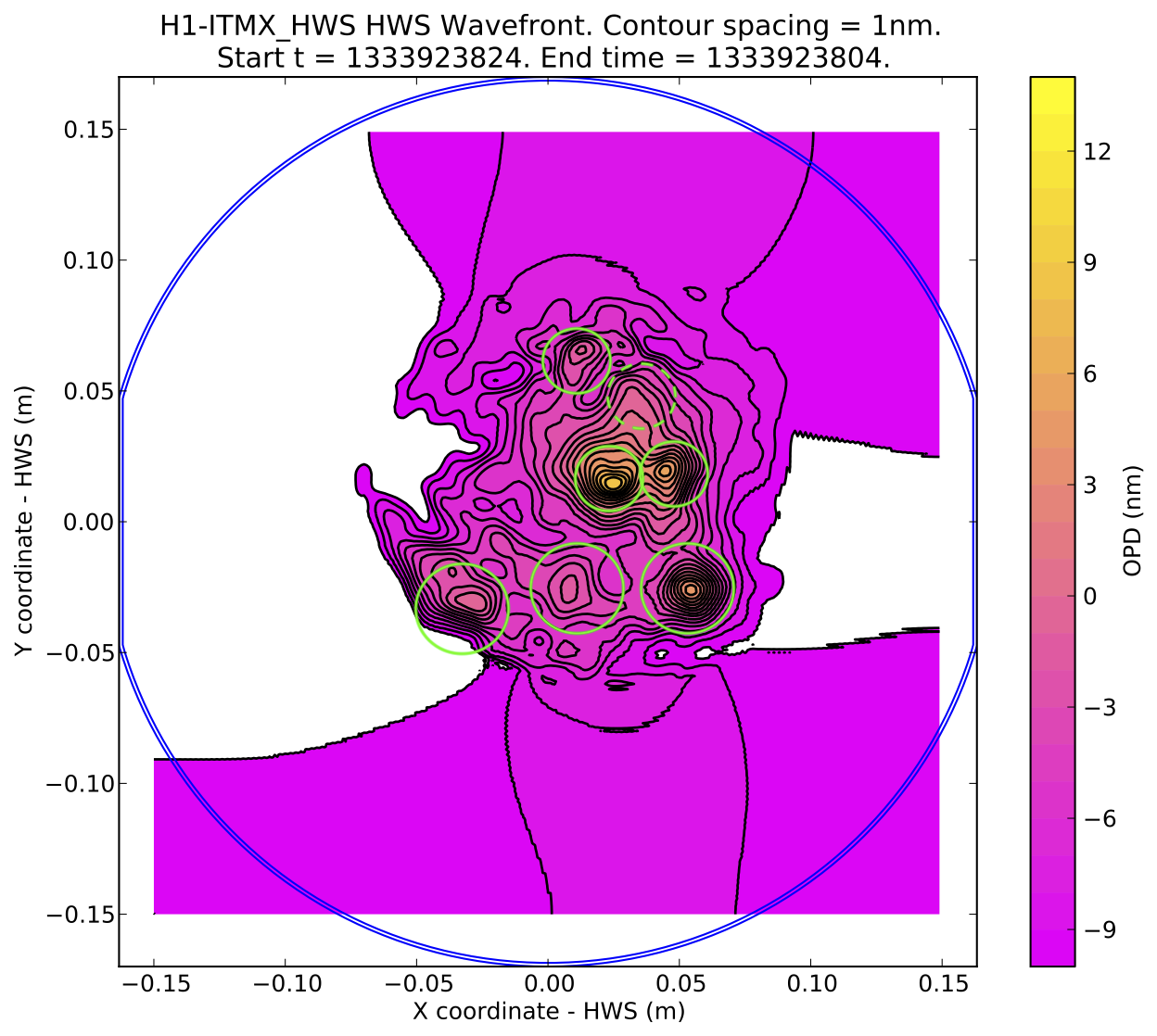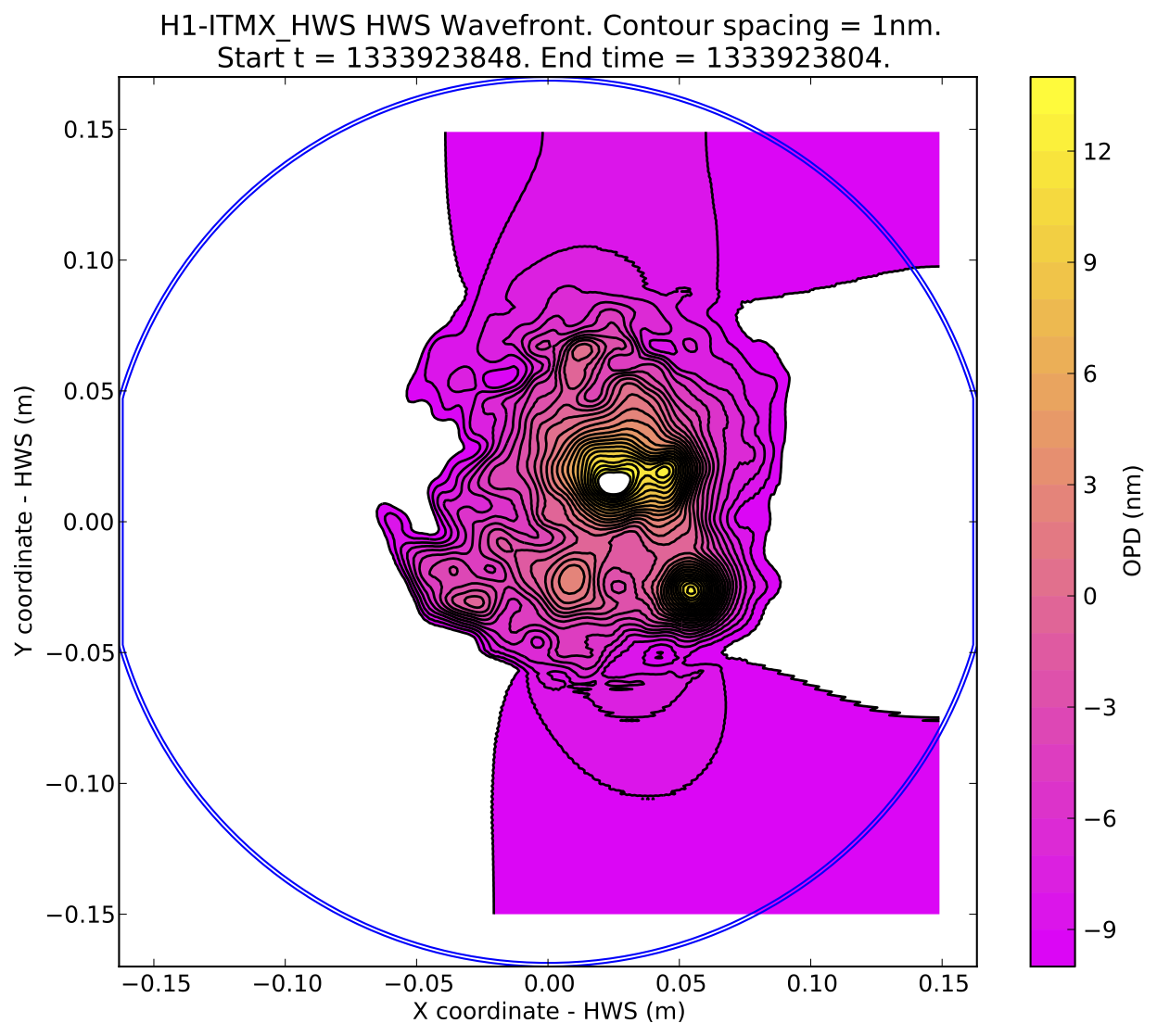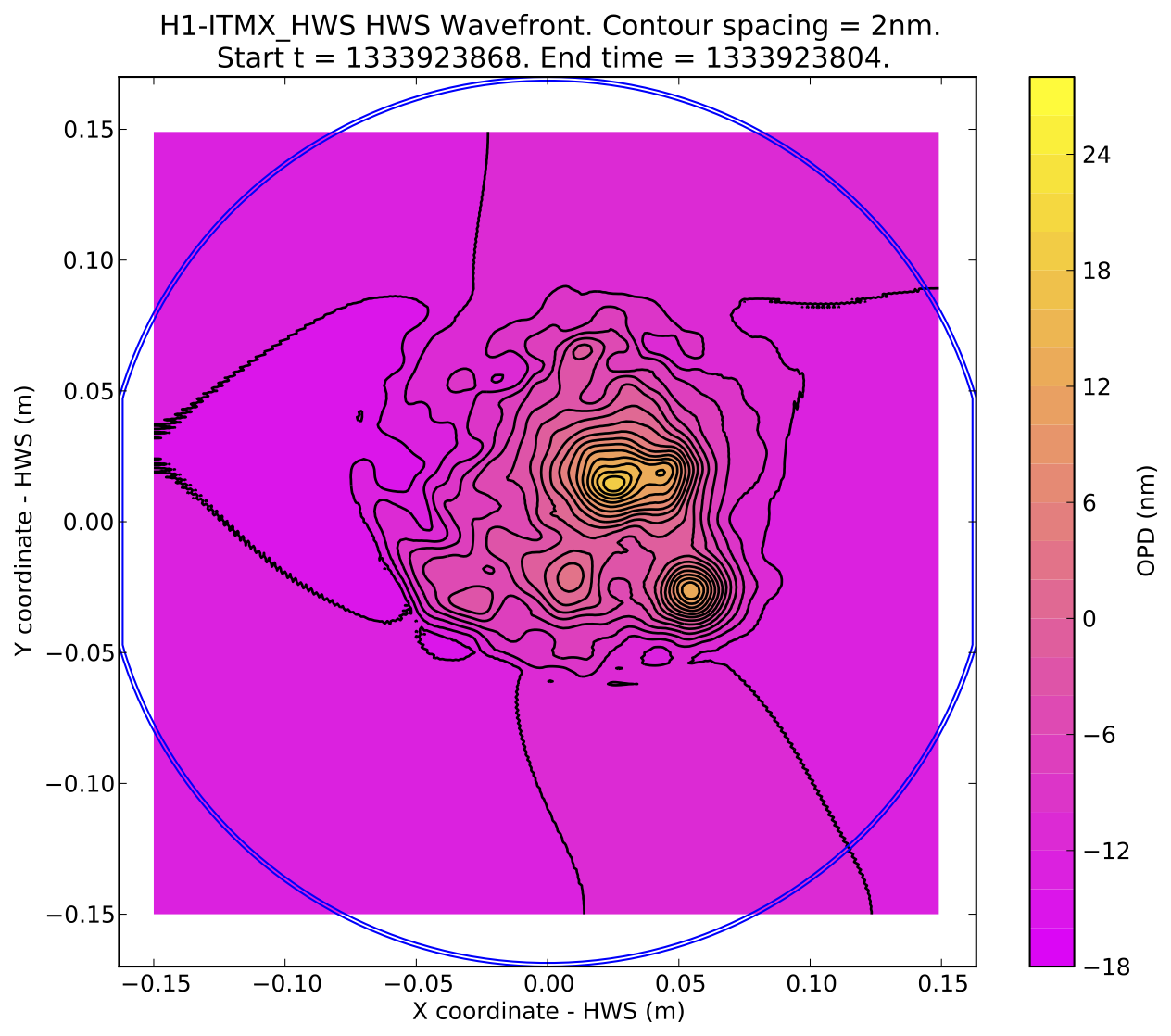I looked at the ITMX HWS signal around the time of the lockloss that Jenne had investigated last week. There are definitely multiple point absorbers on ITMX. At least 6, possibly 7. The signature feature that these are real thermal effects is the transverse diffusion with time.
Since this is a lock-loss, I've inverted the reference and live times here to show what the wavefront would look like on power up.
DELTA t = 20s

DELTA t = 40s

DELTA t = 60s (note change in contour spacing)

For reference, I previously looked at the data before O3 and concluded that it looked more consistent with uniform than a single point absorber: https://alog.ligo-wa.caltech.edu/aLOG/index.php?callRep=51390
Unfortunately, the O3 configuration showed clipping on the HWS beam making it difficult to eliminate systematic errors: https://alog.ligo-wa.caltech.edu/aLOG/index.php?callRep=45673
I'm looking through stored data from before O3 for re-analysis but so far I've not been able to get a clean consistent result. The power up happens over several minutes - this tends to average out the effects of point aborbers.


